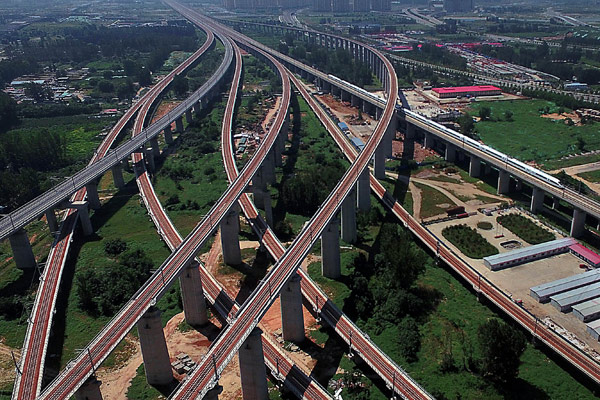Plans will boost central region, official says
2016-12-10 11:12 | China Daily |
Editor: Huang Mingrui
Workers test mobile phones at a plant in Wuhan, Hubei province. (Photo/China Daily)
The six provinces that form central China are expected to catch up with the developed neighboring regions through supportive measures to attract investment and boost development of traditional industries, an official in the nation's top economic regulator said on Friday.
"
The region has potential to catch up with neighboring developed regions, with detailed plans and key tasks set for the five-year period," said He Lifeng, vice-minister of the National Development and Reform Commission, referring to a guideline for 2016 to 2020 that the State Council approved this week.
The guideline specifically targets the central provinces of
Henan, Shanxi, Hubei, Anhui, Hunan and Jiangxi.
It aims to turn the central region into the
nation's major manufacturing base, a model for modern agriculture and urbanization, He said.
The central region has well-established industries such as mining, farming and agriculture processing, and it will receive more government support in industrial upgrading, in spurring the development of traditional industries and in building transportation infrastructure, He said.
The central government will help improve the region's level of opening-up, attract more investment and provide more market access for foreign investment, He said.
Adjacent to the rich and large coastal economies of Guangdong and Shandong provinces, the central region has developed quickly, but unevenly. It has lagged behind developed coastal regions, which have long benefited from the central government' opening-up policies.
According to the National Bureau of Statistics,
economic growth in five of the six provinces was higher in the first three quarters than the 6.7 percent national level, but the nation's coal base, Shanxi province, only a 4 percent growth rate.
Liu Shengjun, an economist at Lujiazui Institute of International Finance, said that invigorating the central region's development is important if the nation is to achieve more balanced growth with the economy stabilized, amid the downward economic pressure it faces while settling into the development phase of the new normal.
"Increasing the pace of urbanization would help the region upgrade its economic structure," he said. "The region has enough room to catch up."
The urbanization rate in the six provinces was 51.2 percent in 2015, 5 percentage points lower than the national level, according to the National Development and Reform Commission.
He added that
improving public facilities, infrastructure construction welfare in the region stimulate the pace of regional urbanization.
********
When the Chinese government plans for it, no doubt it will happen.
They have the track record.
.


















